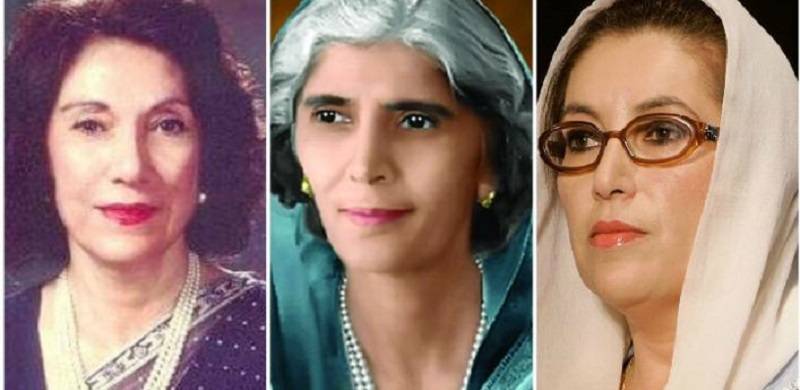
The year 2020 marked the 25th anniversary of the United Nations World Conference on Women in Beijing and the 100th anniversary of white women’s right to vote in America (women of color earned the right to vote in 1965), two seminal moments for gender equality.
The United Nations International Women’s Day is celebrated all over the world on March 8 every year. The Day is dedicated to honoring the achievements of women throughout history and all across the globe. It is typically a day for women from all different backgrounds and cultures to unite together to fight for gender parity and women’s rights.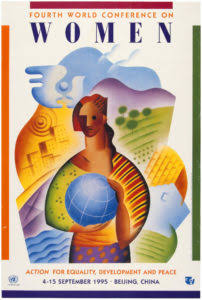
With women and girls making half of the global population, every country in the world should have for its mission to guarante that women’s rights are not only protected but that their equality is realized.
With International Women’s Day, the UN Secretary General Antonio Guterres last year expressed his frustration and blasted the intractable power of patriarchy, the cause of overwhelming gender injustice and an abuse of historical proportions. “Just as slavery and colonialism were a stain on previous centuries, women’s inequality should shame us all in the 21st Century,” he said while speaking on the 28th of February last year at the New School University in New York City. “Because it is not only unacceptable; it is stupid.”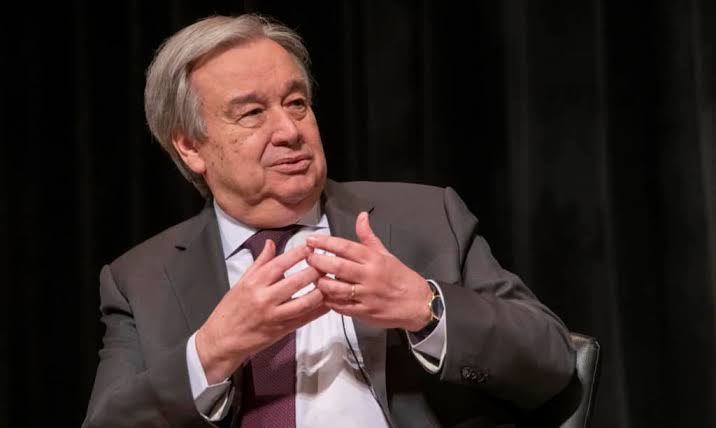
The Secretary General’s remarks at a progressive university in Manhattan’s Greenwich Village, which was awarding him an honorary doctorate, sounded a lot like an indictment of man-made cultures still clinging to powers, publicly obvious as in Pakistan that circumscribe the lives of women and girls. “The state of women’s rights remains dire,” he lamented.
The world’s top diplomat went on to say that, "inequality and discrimination are the norm everywhere. Progress has slowed to a standstill. There is a strong and relentless pushback against women’s rights. Violence against women, including femicide is at epidemic levels, legal protection against rape and domestic violence are being diluted or rolled back in some places. Rape within marriage continues to be legal in 34 countries. Women’s sexual and reproductive rights are under threat from different sides. Policies that penalize women, like austerity and coercive reproduction are back in fashion.”
The year 2020 also marked the 75th anniversary of the founding of the United Nations along with the 25th anniversary of the Beijing World Conference on Women. The Fourth World Conference on Women: Action for Equality, Development and Peace was the name given for a conference convened by the United Nations during 4-15 September 1995 in Beijing.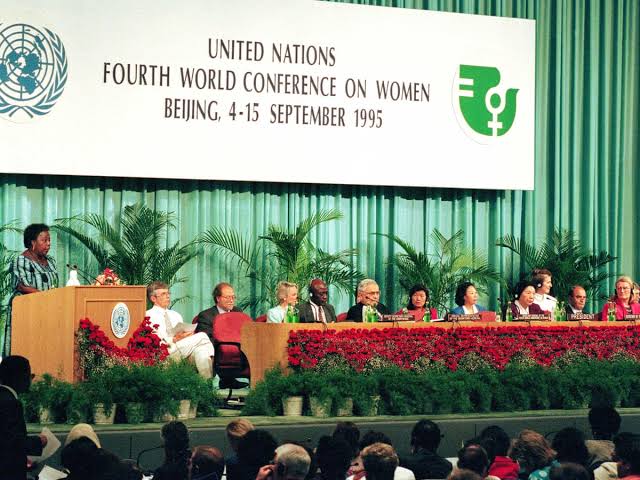
There could not be a more appropriate place for convening the Beijing Conference than China which has been the world leader in protecting women rights since its inception. Mao Zedong proclaimed that “women hold up half the sky”, to prove that women are a resource that ought to be deployed outside of the homes into the professional fields. It is such a powerful statement of gender equality that affirms that women can do just as much as men can do.
I attended the Beijing Conference as Resident Representative and member of the United Nations Food and Agriculture Organization’s delegation. Member states including Pakistan adopted the Beijing Declaration and Platform for Action which marked a significant turning point for the global agenda for gender equality. It set strategic objectives and actions for the advancement of women and gender equality. It was one of the largest gatherings of Heads of Government in China. Pakistan delegation was led by the then Prime Minister Benazir Bhutto who together with Hilary Clinton were the stars of the Conference.
As for Pakistan, it is a signatory to the Beijing Convention and yet according to Human Rights Commission of Pakistan, 90% of women have faced some form of domestic violence at the hands of their husbands or families. And 47% of married women have experienced sexual abuse, particularly domestic rape.
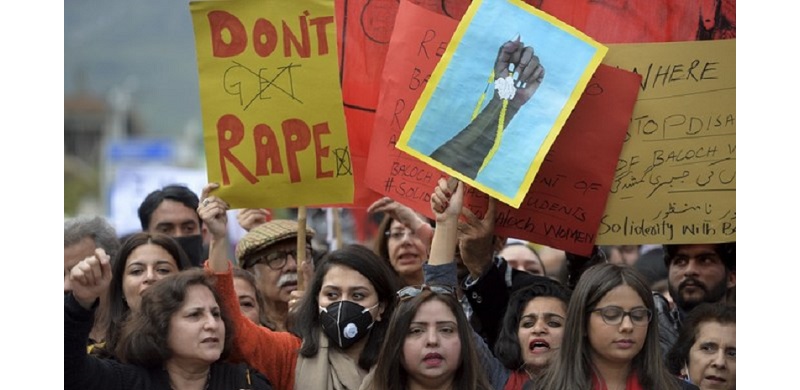
According to Pakistan Economic Survey, female literacy rate is dismal 48% while male is 70%. This further declines to 36% in rural areas. Women in Baluchistan have the lowest literacy rate at 15% and Sindh at 19%. Women participation in labor force is a mere 22%.
According to the World Economic Forum’s Global Gender Gap report 2020, Pakistan ranks 151 out of 153 countries in the gender equality index due to its abysmal performance in women’s participation, political empowerment and enrolment in higher education. Bangladesh stands at 50, 62 positions above India (112).
Pakistan at birth got off to a start as a progressive country where women were granted the sufferage in 1947 and their right to vote was reaffirmed in 1956 in national elections under the interim constitution. The provision of reservation of seats for women in parliament existed throughout the constitutional history of Pakistan from 1956 to 1973.
Successive governments, civilians or military, adopted regressive policies against women giving rise to discrimination, racism and sexual harassment in workplaces.
The Chief Justice Islamabad High Court, while dismissing the petition against ‘Aurat March’ in his landmark judgement, invited the petitioners and the citizens to “introspect and demonstrably show courage against the practices which are flagrantly offensive to the injunctions of Islam e.g., mindsets that do not welcome the birth of a female child, honor killings, rape, practices such as wane, swara, karo-kari etc.”
Every woman has the right to exercise her reproductive rights (underwritten at the 1994 Cairo International Conference on Population and Development) to be protected from violence and harmful practices in the development context which still remains outside the grasp of women in Pakistan.
As Representative of the United Nations Food and Agriculture Organization in China for over seven years in the 1990s which coincided with its opening up to the outside world, I witnessed China’s spectacular rise in every sphere of economic activity. The colleges started the countrywide enrolment of women and offered courses such as international trade, and marketing to meet economic needs. More Chinese women were embarking on careers in science, technology, engineering and math. Chinese expatriates in large numbers who were incentivized to return to the homeland brought their talent to bear on the “economic earthquake” leading to its rise as super economic power.
China is no stranger to women in powerful positions with large number of women occupying the top jobs. China has explicitly upheld the notion of gender equality in daily life and tasks. Generations of Chinese women and men have grown up with these ideas of gender balance which has contributed to China’s strong female workforce, 64% of women work compared with 54% in the USA and UK.
It is even more impressive that Chinese women are also excelling in their work with 33% of married women aged under 40 earning more than their husbands, while a further 19% of single women earn more than their male counterparts, according to BBDO Voice report.
Chinese truly believe that there are no male or female leaders, there are just leaders.
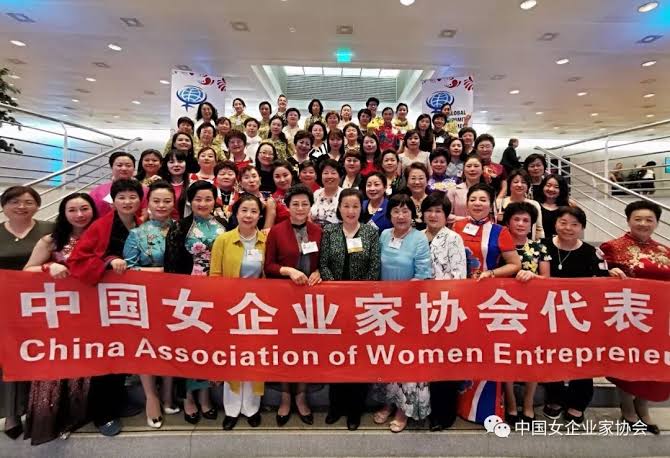
And today according to recent survey by a Shanghai based research, more than half of self-made female billionaires in the world are Chinese and the number is set to rise thanks to education, urbanization, technological advancement and productivity growth that have helped provide environment for all to thrive. Of the 89 female billionaires in the world (2019), 51 are Chinese. On the list of 89, there were 18 Americans and 6 British women.
In June last year, the International Labor Organization adopted a new treaty against violence and harassment in workplace, codifying the #Me too Movement ‘s aims into international law for the first time. The Convention provides leverage for activities like ‘Aurat March’ advocating for domestic policy changes by building international consensus that all people have the “right to a world of work free from violence and harassment”.
It is high time that the Prime Minister who repeatedly quotes China model, fulfils his promise to end discrinminatory laws against women, addressing gender parity, and taking initiatives for women’s education, economic opportunity, health care and legal protection.
The United Nations International Women’s Day is celebrated all over the world on March 8 every year. The Day is dedicated to honoring the achievements of women throughout history and all across the globe. It is typically a day for women from all different backgrounds and cultures to unite together to fight for gender parity and women’s rights.

With women and girls making half of the global population, every country in the world should have for its mission to guarante that women’s rights are not only protected but that their equality is realized.
With International Women’s Day, the UN Secretary General Antonio Guterres last year expressed his frustration and blasted the intractable power of patriarchy, the cause of overwhelming gender injustice and an abuse of historical proportions. “Just as slavery and colonialism were a stain on previous centuries, women’s inequality should shame us all in the 21st Century,” he said while speaking on the 28th of February last year at the New School University in New York City. “Because it is not only unacceptable; it is stupid.”

The Secretary General’s remarks at a progressive university in Manhattan’s Greenwich Village, which was awarding him an honorary doctorate, sounded a lot like an indictment of man-made cultures still clinging to powers, publicly obvious as in Pakistan that circumscribe the lives of women and girls. “The state of women’s rights remains dire,” he lamented.
The world’s top diplomat went on to say that, "inequality and discrimination are the norm everywhere. Progress has slowed to a standstill. There is a strong and relentless pushback against women’s rights. Violence against women, including femicide is at epidemic levels, legal protection against rape and domestic violence are being diluted or rolled back in some places. Rape within marriage continues to be legal in 34 countries. Women’s sexual and reproductive rights are under threat from different sides. Policies that penalize women, like austerity and coercive reproduction are back in fashion.”
The year 2020 also marked the 75th anniversary of the founding of the United Nations along with the 25th anniversary of the Beijing World Conference on Women. The Fourth World Conference on Women: Action for Equality, Development and Peace was the name given for a conference convened by the United Nations during 4-15 September 1995 in Beijing.

There could not be a more appropriate place for convening the Beijing Conference than China which has been the world leader in protecting women rights since its inception. Mao Zedong proclaimed that “women hold up half the sky”, to prove that women are a resource that ought to be deployed outside of the homes into the professional fields. It is such a powerful statement of gender equality that affirms that women can do just as much as men can do.
I attended the Beijing Conference as Resident Representative and member of the United Nations Food and Agriculture Organization’s delegation. Member states including Pakistan adopted the Beijing Declaration and Platform for Action which marked a significant turning point for the global agenda for gender equality. It set strategic objectives and actions for the advancement of women and gender equality. It was one of the largest gatherings of Heads of Government in China. Pakistan delegation was led by the then Prime Minister Benazir Bhutto who together with Hilary Clinton were the stars of the Conference.
As for Pakistan, it is a signatory to the Beijing Convention and yet according to Human Rights Commission of Pakistan, 90% of women have faced some form of domestic violence at the hands of their husbands or families. And 47% of married women have experienced sexual abuse, particularly domestic rape.

Activists of the Aurat (Woman) March shout slogans during a rally to mark International Women's Day in Islamabad on March 8, 2020. - Protesters marched in Pakistani cities on March 8 to mark International Women's Day in an ultra-conservative society where women are still put to death under ancient "honour" codes. (Photo by Aamir QURESHI / AFP)
According to Pakistan Economic Survey, female literacy rate is dismal 48% while male is 70%. This further declines to 36% in rural areas. Women in Baluchistan have the lowest literacy rate at 15% and Sindh at 19%. Women participation in labor force is a mere 22%.
According to the World Economic Forum’s Global Gender Gap report 2020, Pakistan ranks 151 out of 153 countries in the gender equality index due to its abysmal performance in women’s participation, political empowerment and enrolment in higher education. Bangladesh stands at 50, 62 positions above India (112).
Pakistan at birth got off to a start as a progressive country where women were granted the sufferage in 1947 and their right to vote was reaffirmed in 1956 in national elections under the interim constitution. The provision of reservation of seats for women in parliament existed throughout the constitutional history of Pakistan from 1956 to 1973.
Successive governments, civilians or military, adopted regressive policies against women giving rise to discrimination, racism and sexual harassment in workplaces.
The Chief Justice Islamabad High Court, while dismissing the petition against ‘Aurat March’ in his landmark judgement, invited the petitioners and the citizens to “introspect and demonstrably show courage against the practices which are flagrantly offensive to the injunctions of Islam e.g., mindsets that do not welcome the birth of a female child, honor killings, rape, practices such as wane, swara, karo-kari etc.”
Every woman has the right to exercise her reproductive rights (underwritten at the 1994 Cairo International Conference on Population and Development) to be protected from violence and harmful practices in the development context which still remains outside the grasp of women in Pakistan.
As Representative of the United Nations Food and Agriculture Organization in China for over seven years in the 1990s which coincided with its opening up to the outside world, I witnessed China’s spectacular rise in every sphere of economic activity. The colleges started the countrywide enrolment of women and offered courses such as international trade, and marketing to meet economic needs. More Chinese women were embarking on careers in science, technology, engineering and math. Chinese expatriates in large numbers who were incentivized to return to the homeland brought their talent to bear on the “economic earthquake” leading to its rise as super economic power.
China is no stranger to women in powerful positions with large number of women occupying the top jobs. China has explicitly upheld the notion of gender equality in daily life and tasks. Generations of Chinese women and men have grown up with these ideas of gender balance which has contributed to China’s strong female workforce, 64% of women work compared with 54% in the USA and UK.
It is even more impressive that Chinese women are also excelling in their work with 33% of married women aged under 40 earning more than their husbands, while a further 19% of single women earn more than their male counterparts, according to BBDO Voice report.
Chinese truly believe that there are no male or female leaders, there are just leaders.

And today according to recent survey by a Shanghai based research, more than half of self-made female billionaires in the world are Chinese and the number is set to rise thanks to education, urbanization, technological advancement and productivity growth that have helped provide environment for all to thrive. Of the 89 female billionaires in the world (2019), 51 are Chinese. On the list of 89, there were 18 Americans and 6 British women.
In June last year, the International Labor Organization adopted a new treaty against violence and harassment in workplace, codifying the #Me too Movement ‘s aims into international law for the first time. The Convention provides leverage for activities like ‘Aurat March’ advocating for domestic policy changes by building international consensus that all people have the “right to a world of work free from violence and harassment”.
It is high time that the Prime Minister who repeatedly quotes China model, fulfils his promise to end discrinminatory laws against women, addressing gender parity, and taking initiatives for women’s education, economic opportunity, health care and legal protection.
